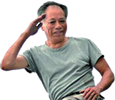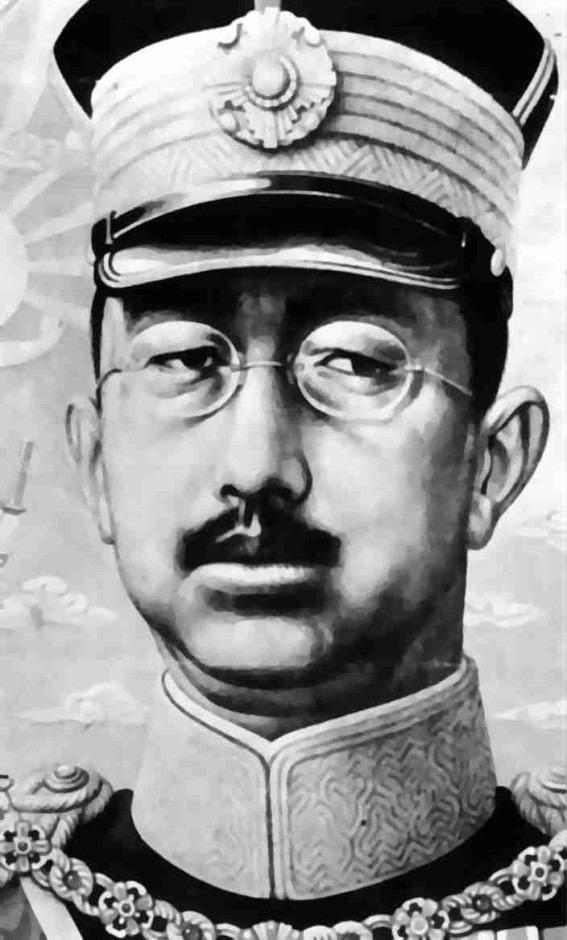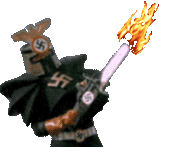The Kaimei Museum
The moth-eaten curtains flutter weakly, brushing lightly against your arm as you travel down the corridor. The moon is shining down on a large garden, just outside the windows. From here you can see a twisted, aged tree, its pink petals the only sign of bright colour amongst the faded greys of the hospital. The
Juunimon. It exists here, as well… but you have no urge to approach it any more than is necessary.
Turning your attention back to the footprints, you continue to follow them: a man and a woman has passed this way. From the distance between the steps, they were not in a hurry. They moved cautiously, perhaps hesitantly.
Were they afraid? This makes it more likely that the people you are following are alive – possibly amongst those trapped in the hospital, together with you – and not some ghostly apparition out to lure you to your doom.
Probably.
It’s hard to be sure of anything anymore.
You reach the end of the tracks: they turn off to your left, leading under a door. There is a sign nailed proudly on the door:
A museum? You wonder what a hospital would need with a museum. As you stretch your hand out, reaching for the door, a sudden headache seizes you. There is a burst of static, and the visage of a scrawny child, pale and hunched over, locking the door knob, flashes before your eyes. You blink and recoil. The image fades away like an old photograph, until it is completely gone.
“H-Hello? Is there somebody there?” asks a tremulous voice from behind the door. The voice sounds familiar – it is that of a young man, clear and pleasant to the ear. “The door is locked… can you let us out? Hello?”
Shaking your head and trying to set your fears aside, you stride forward and grab the knob. It resists your attempts to turn it, rattling distinctively. The man is right – it is locked.
“We can’t open it from the inside either,” he calls out, before you can say anything.
“There has to be a key somewhere, but we’ve searched every inch of this room and found nothing,” says an older woman. You know that voice too.
There probably is a key lying somewhere in the hospital, waiting for you to find it… but why waste time?
Kneeling down, you unfold the roll of picks quietly. It takes but a minute for the door to unlock and swing open, revealing its inhabitants. You stand up, pocketing the lockpicks as you do so, and look at Sawada Junichi and Kayano Rina. They seem quite surprised to see you, but eagerly hurry out of the room anyway.
“Whoa, did you have the key already?” exclaims Sawada.
“…something like that,” you say.
“We thought we were the only ones in this place,” says Kayano. “Thank goodness you came along!”
“Yeah,” adds Sawada, “We woke up and just found ourselves here, for no good reason.” The two of them tell their tale: they were in Ikei Medical University Hospital, and then found themselves here, with no memory of how they arrived to this place.
Story of my life, you think, but you nod along with them anyway.
“So, how did you get here… er…” Sawada reaches for your name.
“Shinoseki Adachi,” you mutter. “You are Sawada Junichi-san, right? Juni-S?”
His well-groomed model face lights up. “
Awesome! Are you a fan of mine?”
“No, not really. I’ve just seen your face on magazines and TV,” you lie, causing a crest-fallen look to weigh down on his brow. His stardom is one of the things you do not recall, though perhaps you have never been interested in celebrities in the first place.
“Right, well, I’m just starting out, so I hope you’ll be a fan of mine from now on, Shinoseki-san!” You must admit, he recovers quickly. You nod uncertainly, flinching in the face of his sunniness.
“My name is Kayano Rina. I’m just your regular office lady,” smiles the older woman as she bends forward slightly in a perfect office bow. You find yourself bowing in return, though in a rather more awkward fashion.
“So! Now that we are free of this dusty, creepy place, it’s time to find a way to unlock the main door!” says Sawada optimistically.
“Ah, about that… actually, I have already unlocked the main doors,” you say.
“Seriously? You’re really
cool, Shinoseki-san! What are we waiting around here for, then? Let’s get out of here!”
“I don’t know, Sawada-san,” says Kayano, a finger on her chin. “I feel like it’s not going to be that easy to leave. This place is just
too strange… it feels like it’d be too easy if we could just walk out like that.”
“We won’t know if we don’t try… ah, Shinoseki-san, where are you going?”
You look back over your shoulder, at the two of them. “I’m going to take a look at the museum.”
“There’s nothing interesting in there,” replies Kayano. “It’s just musty old documents and books about the hospital and its founding group.”
“That’s fine.” You shrug, turn and enter the museum.
track: museum
It is not a very large room; it is about the size of a big study. One end of the room is filled with shelves of books. Newspaper articles about Kaimei Hospital's successes in the medical field are plastered neatly on the walls. Small exhibits are lined up on shelves and on pedestals. There is a model of the hospital in a glass case, and some organs and limbs that have been dissected for display, embedded in paraffin, including some disembodied penises arranged in a circle and a sagittal cross-section of a female pelvis. At the back of the room, a line of brains are proudly displayed in a position of honour: from their size, you can tell that they would have belonged to children, probably between the age of ten to twelve.
A series of four old photographs are mounted on the far wall.
The first is that of a peaceful, idyllic traditional village: the placard claims it to be Yomiki Village, circa 1880.
The second is that of a Western-styled mansion, with a placard calling it Sakaguchi Mansion, circa 1888.
The third picture depicts the same mansion, with only a few renovations. It is now called Research Ward 169, and the photo is dated 1940.
The fourth photograph is the newest: Kaimei Hospital, circa 1966.
Next to them, you see yet another portrait of Director Maeda. Beneath it is a plaque that tells a simple biography:
Director Dr. Maeda Keiji
Born 1917
Dr. Maeda was appointed as the Medical Director of the newly founded Kaimei Hospital in 1966. He has had a long and illustrious medical career prior to his post at Kaimei, and is known nationally for his work in paediatrics and child psychology. This museum was endowed from his personal funds in 1969, marking another of his numerous contributions to Kaimei Hospital.
Something about the portrait feels wrong to you. You take a closer look: it takes you a few seconds to realize that it is not the portrait itself, but its surroundings. There is an off-center, square section of the wall, half-covered by Director Maeda’s portrait, that is very slightly brighter than its surroundings. Something else used to hang in its place.
“Uh… Shinoseki-san, are you sure you should be touching that?” You hear Sawada calling out to you nervously from the corridor, but you ignore him and proceed to remove the director’s portrait.
Bare wall.
What did I expect? There is nothing to indicate what used to be in this place, except that from the size of the square, slightly larger than the director’s own portrait, chances are that it was also a picture of some sort. Deducing the nature of that picture from an empty wall is beyond your ability, however. You replace the portrait on its hook.
Next, the books. Walking over to the dusty bookshelves, you scan the spines of the books quickly. Most of them are medical tomes, but there are a few titles that jump out at you. You stop, and reach out for:
***
A. Rise of the Kaimei Group, by Maeda Kouichiro
B. The History of Kaimei Hospital, by Shinohara Madoka
C. Records of Yomiki Village, by Hidetaka Matsui
D. Treatise on The Immature Brain, by Dr. Maeda Keiji
E. Western Occultism in Eastern Japan, by Shinoseki Adachi


.png)








![Glory to Codexia! [2012] Codex 2012](/forums/smiles/campaign_tags/campaign_slushfund2012.png)













